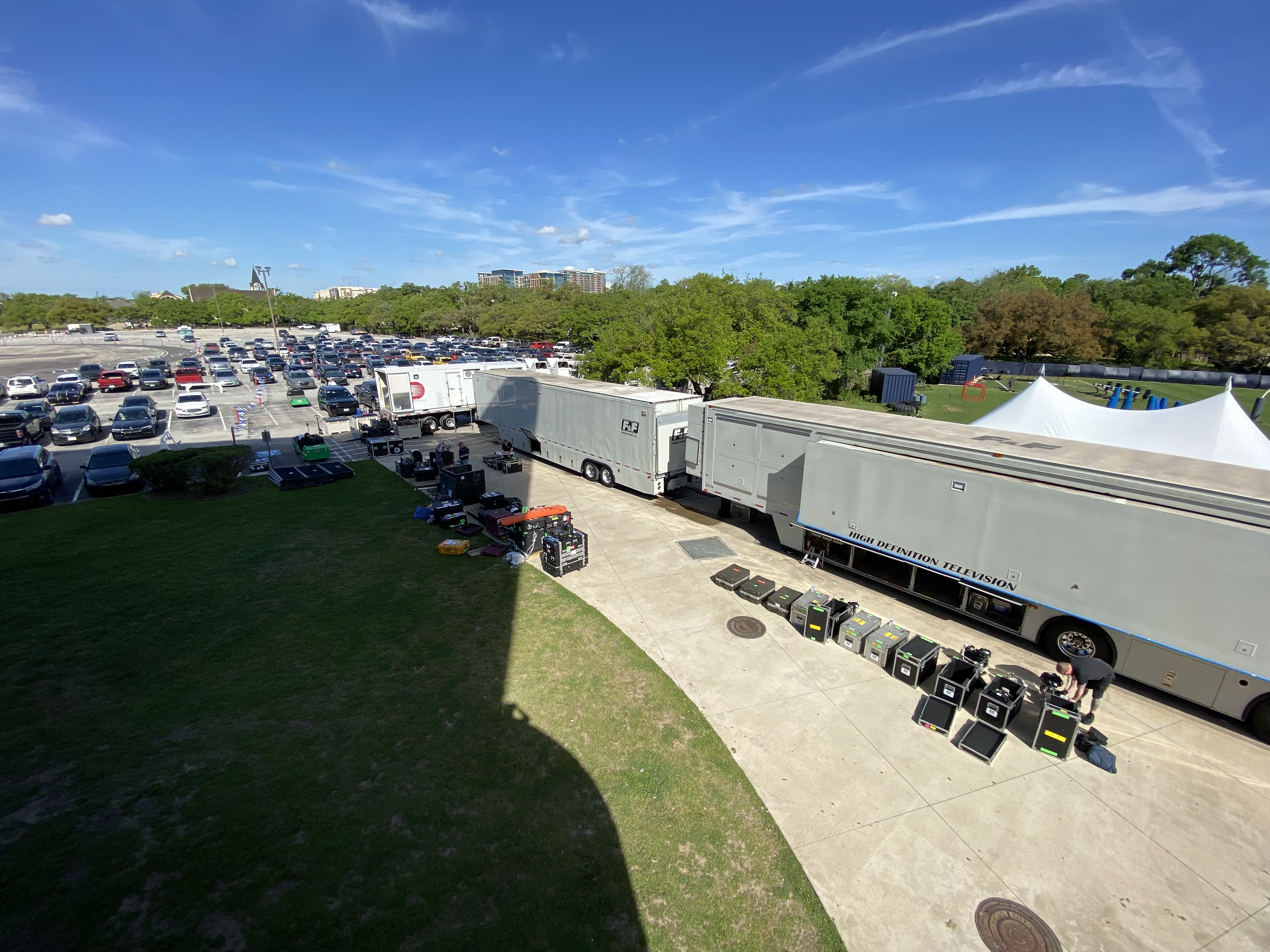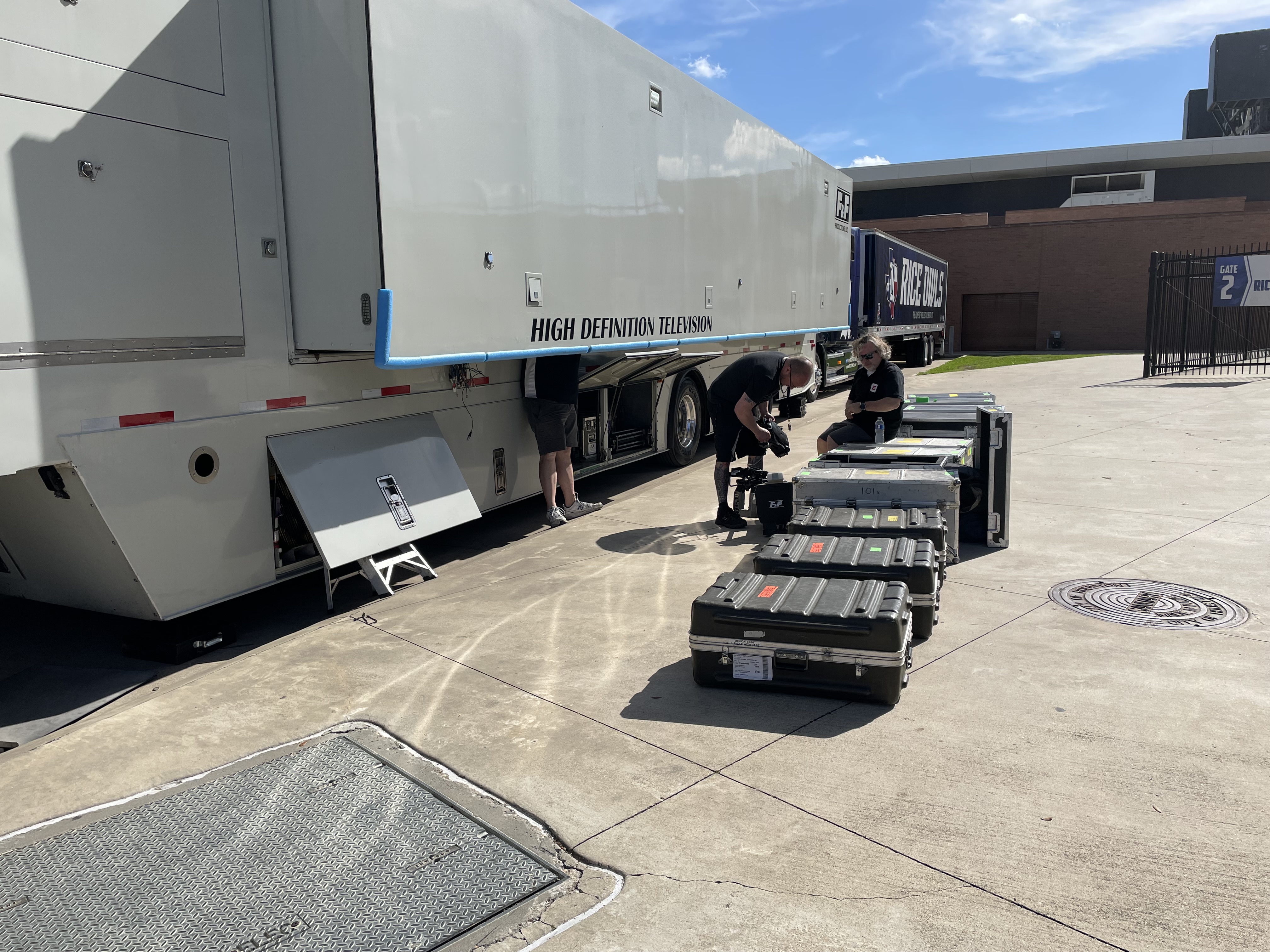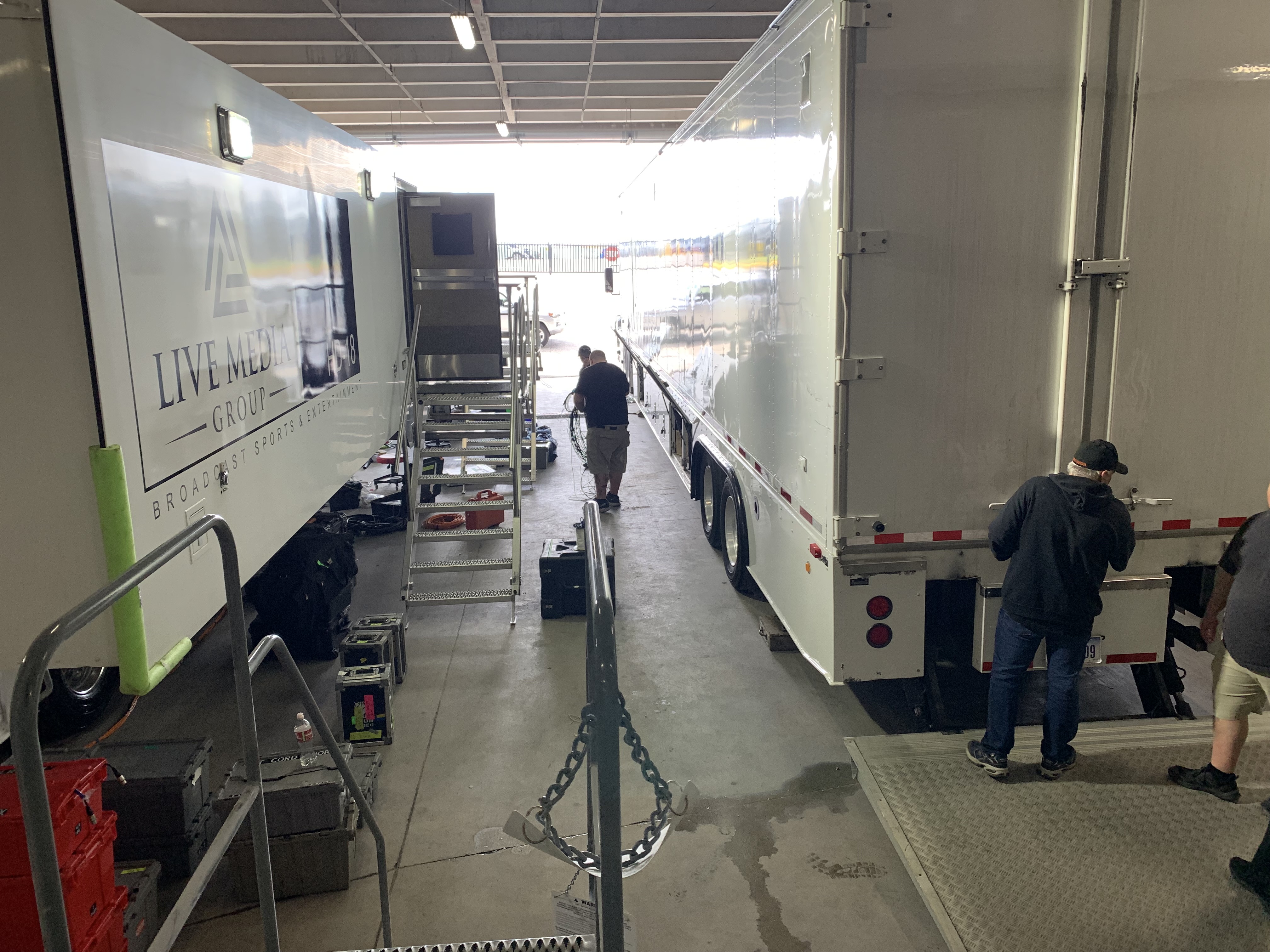ESPN Takes Unique Tech Approach to Bring UFL Fans Closer to the Game
Whether it’s players’ and coaches’ wireless mics or BOLT6 LIDAR, technology pulls viewers in

BRISTOL, Conn.—With the first weekend of the United Football League (UFL) complete, there are early signs the new league’s emphasis on using technology to engage television viewers more fully may be working.
An early season example was a touchdown scoring play in the fourth quarter of the D.C. Defenders vs. San Antonio Brahmas game that was called back after Defenders Jean Delance jumped early.
“There was a notable exchange where a player [Brahmas linebacker Delonte Scott] called out a personal foul. It came to be a major [flagrant] personal foul … and a player [Delance] was actually ejected,” says Jarrett Baker, manager of remote operations at ESPN.
Viewers could clearly hear Scott saying to Defenders quarterback Jordan Ta’amu: “Hey, your boy spit on me again, it’s over. He spit on me again, it’s over.”
Capturing the on-field comment is the direct result of the UFL micing six players and coaches every week, says Baker.
“The viewers are hearing about that as you head into the replay,” he says. “Then you hear the conversation with the officials and the replay center and what they’re looking at. While it takes a couple of minutes to sort out, the viewer at home knows what they’re looking at. It’s not a guessing game.”
As a result, viewers are more engaged in what’s happening on the field, says Tommy Mitchell, senior manager of remote operations at ESPN. “Whether it’s officials, coaches, players to players, it [the wireless communications] brings viewers into the game,” he says.
The professional video industry's #1 source for news, trends and product and tech information. Sign up below.
The new league, the result of the merger between the USFL and XFL, carries on the XFL practice of outfitting some players and coaches with wireless mics and sharing what they say during the game—something fans “don’t see anywhere else,” says Baker.
ESPN shares UFL coverage with Fox Sports. Between the two, the broadcasters will produce four regular season games each weekend through June 1. Each will then produce a conference championship game, and ultimately Fox Sports will produce the league championship on June 16.
(This weekend, ESPN will air the Brahmas vs. Memphis Showboats at noon EDT and the Arlington Renegades vs. St. Louis Battlehawks at 8 p.m. EDT, Saturday, April 6, as well as the Birmingham Stallions vs. Michigan Panthers at noon EDT, Sunday, April 7. Fox Sports will telecast the Houston Roughnecks vs. D.C. Defenders at 4 p.m. EDT.)
The UFL has also partnered with BOLT6 to deploy the company’s optical tracking technology for precise ball spotting and instant down-and-distance. “It's a perfect example of leveraging technology,” says Baker.
Six fixed cameras have been deployed at each UFL stadium for the entire season. They are used to map each field with a virtual grid. Then using a laser-based Light Detection and Ranging (LIDAR) system, BOLT6 determines exactly where the ball should be spotted based on where forward momentum stopped.
“In many cases, the chain gang is there just for decoration,” says Baker, referencing the officiating crew traditionally responsible for measuring to determine if a team has made a first down. “If it’s a close read…, BOLT6 works in the cloud, and on our director’s call, they can roll an animation that shows a review and instantly tells viewers if it is a first down.”
Planning and setup
Being brand new, the UFL offered league management and broadcasters alike the chance to take a fresh look at how best to use existing and new television technologies to engage viewers more fully in games. But they didn’t start with a blank slate.
“We took under advisement what we accomplished with the XFL last year,” says Mitchell, pointing to micing players and coaches. “We took a lot of what we learned last year, tailored some of those things and streamlined them into a broader approach to the UFL.”
For ESPN, that streamlining comes in the form of uniformity. While it had different versions of how it produced XFL games, ESPN has one approach to UFL game production, he says.
“It allows us to do a lot of things in replication, so it’s easier to communicate and easier to work with the league when all of our plans are the same and our shows are all the same size,” says Mitchell. “Our execution model is all the same, which was not the case in the past.”
While this uniformity streamlines production, it does not diminish the overall goal of the league for television. “They [the league] definitely wanted the big game feel and that comes with the technology that you use—a Skycam, for instance,” says Mitchell. “If you don’t have a Skycam on the game, people notice. They wanted super slow-motion; they wanted RF to have access on the field.”
“We were able to manipulate our plans to fit the vast majority of those requests,” he adds.
ESPN is producing UFL games in 1080p SDR and down-converts the productions to 720p HD for distribution. The sports network is employing REMI (remote integration) production from its facility in Bristol, Conn.
The move to 1080p HD using REMI production was a big step for ESPN. “Getting that many feeds coming in and out of the plant [in Bristol], especially on a weekend when all three crews are working, that’s a pretty big undertaking,” says Baker.
Not only is the Bristol facility servicing ESPN, but also ABC, ESPN2 and digital with REMI production resources assigned to the 2024 NCAA Women’s Basketball Tournament, Sunday Night Baseball and the NHL. “That stuff doesn’t stop,” he says.
Besides the seven hard cameras, one of which is on a sideline cart, ESPN is deploying two wireless handhelds, which can be taken into the locker rooms, a Skycam and a robotic booth camera. ESPN also takes multiple feeds from the UFL, including fixed POV camera angles, says Baker.
Between 60 and 70 feeds leave the on-site truck for multiple destinations, including Pico, Calif., for replay, Bristol for REMI production and a DVSport site for review, he adds.
Moving on
Going into Week Two of the season, ESPN is generally pleased with its performance out of the gates, but it’s likely there will be small tweaks in its production from week to week.
“I think like any new property, you’re always going to look at what you did really well, acknowledge that and identify areas where you can grow,” says Baker.
Improvements going forward come down to addressing the finer details. “Because there were so many different groups involved after the leagues completed their merger in January and people are still getting up to speed on their roles, it’s making sure we’re communicating and checking that we have that one little detail on tab seven of page 13 covered,” he says.
“It’s those sorts of little adjustments that just come with everybody settling into their roles.”
(Editor’s Note: To read about the Fox Sports UFL coverage see: “Fox Sports Prepares For UFL, ‘A League Defined By Technology’.”)
Phil Kurz is a contributing editor to TV Tech. He has written about TV and video technology for more than 30 years and served as editor of three leading industry magazines. He earned a Bachelor of Journalism and a Master’s Degree in Journalism from the University of Missouri-Columbia School of Journalism.



